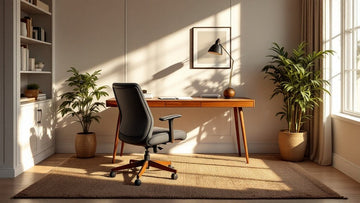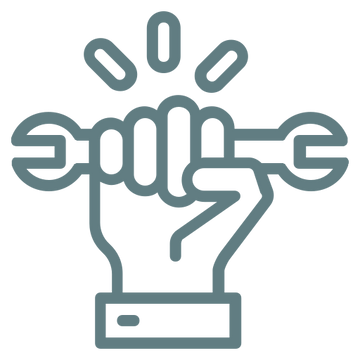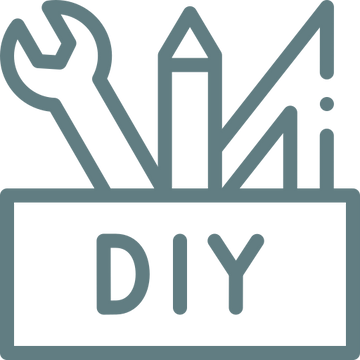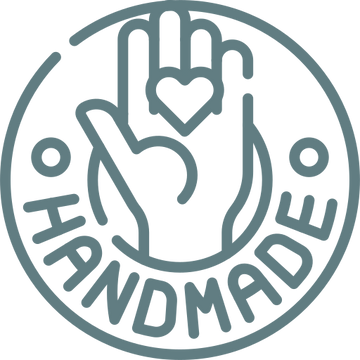A good work setup needs the right mix of lights and furniture. Bright, blue-like lights help people focus, while softer, warm lights work better for team tasks. Good lighting helps people work better and feel happier at work. The right furniture matters too - chairs that support good posture and desks that can change height make work more comfortable for different needs. Using sunlight from windows and lights that can be made brighter or dimmer adds energy to the workplace. When you put these pieces together the right way, people can work better and feel better. Look into more ways to make your office space work better for everyone.
Key Takeaways
- Utilize bright, bluish lighting to enhance focus, while incorporating warmer tones for collaborative spaces to improve teamwork.
- Choose ergonomic furniture, like adjustable chairs, to support comfort and prevent strain during long work hours.
- Integrate natural light through strategic desk placement and quality window coverings to boost mood and productivity.
- Implement various lighting options, including ambient, task, and accent lighting, to cater to different activities and create a dynamic environment.
- Opt for multifunctional furniture with effective storage solutions to maintain organization and adapt to evolving work needs.
Importance of Lighting
Good lighting at work matters a lot - research shows the right lighting can help people work up to 20% better.
When lighting is done right, it helps workers do their jobs better and feel happier at work.
New lighting tools, like LEDs and smart switches, let companies adjust the light based on different jobs and times.
For example, bright, bluish light can help people focus on hard thinking tasks, while softer, yellowish light works better for team meetings.
Using sunlight in office design also helps people think better and stay more alert.
When companies make good lighting a priority, they create spaces where workers can be more creative, work better, and enjoy their jobs more. Learn more about how lighting transforms furniture and workspace environments.
Choosing the Right Furniture
Picking the right furniture is key to making a workspace where you can work well and feel comfortable. Different materials like metal, wood, and newer materials each offer their own benefits and looks.
When setting up your work area, look for storage pieces that are both useful and good-looking. Cabinets that slide can save space and hide your supplies neatly, while open shelves make things easy to reach and help keep everything tidy.
Make sure your furniture can change with your work needs. When you choose the right pieces with care, you can build a workspace that helps you stay creative and work better, making your time at work more enjoyable. For comprehensive guidance on selecting office furniture, explore our home office collection.
Ergonomics and Comfort
A good workplace design puts comfort and healthy body positions first to help people work better and feel better. These four key things make a great work setup:
- Good Body Position: Sitting and standing the right way stops pain and keeps you comfortable.
- Chairs You Can Change: Choose chairs that fit different body shapes and what each person needs.
- Foot Supports: Using foot supports helps you sit better and keeps blood flowing well.
- Screen and Keyboard Setup: Putting screens and keyboards at the right height stops pain and guards against injuries from doing the same moves over and over.
Having a workspace you can change helps people adjust things to fit them better.
Taking breaks to move around helps lower stress.
When workplaces focus on these comfort features, workers stay healthier and get more done. For detailed advice on selecting the right seating, check out our ergonomic office chair selection guide.
Natural Light Optimization
Making the most of sunlight at work helps create a better space and helps people work better.
It's important to set up work areas the right way - putting desks by windows gives workers good light and nice views outside. Adding skylights can bring in more sunlight from above, and special materials can help spread the light evenly.
Good window coverings help cut down on glare and can be changed as seasons shift, keeping workers comfortable all year round.
When you get the right mix of light and workable space, you create a place that helps people feel fresh and energized.
Using natural light not only helps workers feel better but also helps them think more creatively, which leads to better work overall.
Types of Lighting Options
Good lighting choices can make a workplace better and help workers do their jobs well. The right lighting helps people work better and feel better.
Four important types of lighting to think about:
- Ambient Lighting: Basic lighting that lights up the whole room evenly for everyday work.
- Task Lighting: Direct light for close-up work like reading or writing, making it easier to see details.
- Accent Lighting: Extra lights that make certain spots stand out and help make the space more creative.
- Dimmable Options: Lights you can make brighter or darker to match different jobs and needs.
Using LED lights and smart lighting helps save power, while picking the right light color helps set the right mood, making the workplace both comfortable and good for getting work done.
Color Schemes and Mood
The right mix of colors at work can affect how employees feel and work. Studies show that different colors can make people feel different ways, so picking the right colors matters.
Blue can help people stay calm and focused at work, while yellow can make people feel happy and think more creatively. Green, like the colors found in nature, helps people feel peaceful and less stressed.
When offices use these colors in a good mix, they create a space where people want to be. By choosing colors carefully in their workplace design, companies can help workers do better work and feel better while doing it.
Space Planning Techniques
Space planning makes a big difference in how well people work and team up in an office.
Good planning helps workers move around easily and get their work done better.
Four main ways to plan office space are:
- Work Zones: Set up different areas for quiet work, team projects, and break time to help workers do different tasks.
- Easy-to-Change Spaces: Use walls and furniture that can move, so teams can change their space when they need to.
- Good Traffic Flow: Put furniture where it helps people walk around and talk to each other without getting stuck.
- Comfort and Health: Pick furniture and layouts that keep workers comfortable and healthy, so they can work well for longer.
These planning steps help create an office where everyone can work well together. For versatile workspace solutions, consider dual-purpose furniture for home office and guest room arrangements.
Personalization of Your Workspace
A workspace that shows who you are can make you happier and help you work better. Adding your own decorations lets you show your personality and makes you feel like the space truly belongs to you.
When you put up things like art, plants, or family photos, plain work areas become more lively and inspiring. The look of your workspace matters; matching colors and good furniture work well with personal items to create a space that helps you think creatively.
Having furniture you can adjust also helps, since everyone works differently. In the end, a workspace that fits your style not only makes you want to work harder but also helps people work better together, leading to new ideas and more interest in work.
When you let people make their workspace their own, you help build a better work setting.
Frequently Asked Questions
How Does Lighting Impact Productivity Levels in the Workplace?
Lighting plays a big role in how well people work. Natural light helps workers feel better and stay focused. Using the right kind of light makes it easier to see and work comfortably, which helps people stay alert and work better. When workers can see well and feel good, they do their jobs better and enjoy their work more.
What Is the Ideal Desk Height for Different Body Types?
Finding the right desk height comes down to how your body fits with your desk and your own size. A good rule is to have your desk at a height where your arms bend at right angles, which helps you stay comfortable and sit up straight while working, no matter your body shape or size.
Can Plants Improve Lighting and Ambiance in My Workspace?
Plants can make your workspace look and feel better by making good use of sunlight. Putting plants in the right spots adds beauty and creates a fresh, lively space that can help you feel better and work better, while bringing a bit of nature indoors.
How Frequently Should I Rearrange My Workspace for Best Results?
Moving your desk and work items around every couple of months can make your space feel new and help you think better. Making these changes keeps you interested in your work, stops things from feeling boring, and helps you get more done with fresh ideas.
What Are the Best Materials for Ergonomic Office Furniture?
The top materials for comfortable office furniture are breathable cloth, flexible metal parts, and firm foam padding. These work together to help you sit correctly, feel less tired, and get more work done while staying healthy.
Conclusion
In summary, selecting the right lighting and quality furniture is key to building a great work environment. At Timbur, we understand how comfort and good design boost productivity, which is why our handmade furniture pieces combine ergonomics with style. Natural light paired with well-planned artificial lighting helps maintain focus and mood throughout the day. When you arrange your space smartly and add personal touches, you create a workspace that's both practical and beautiful. These elements working together make an environment where people can work better and feel more creative.









